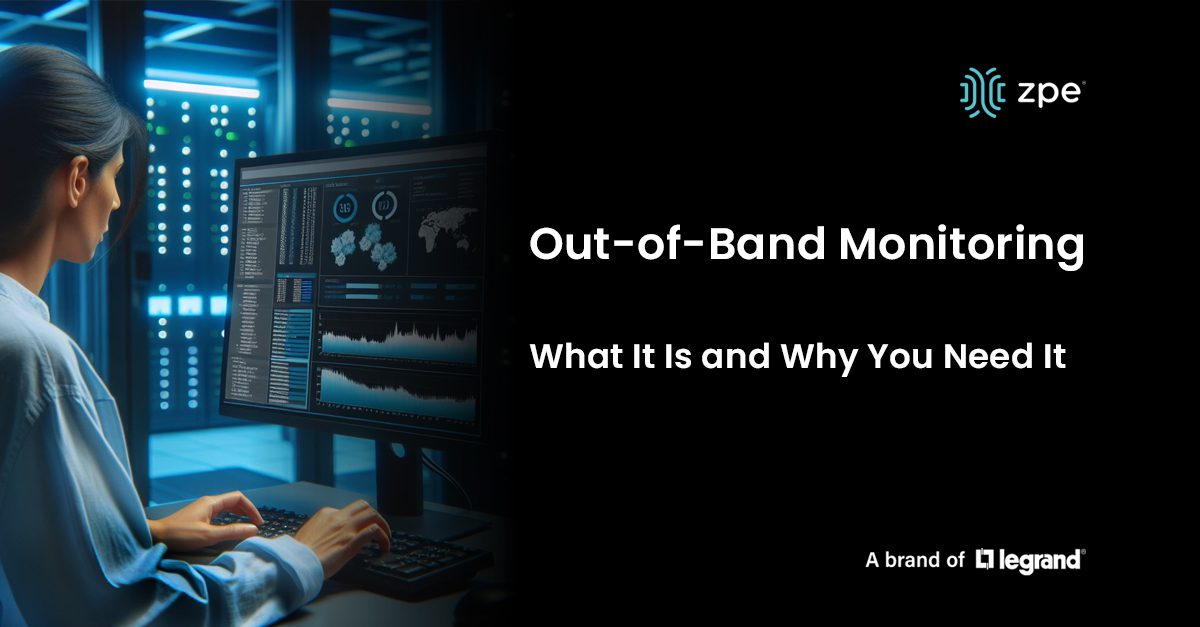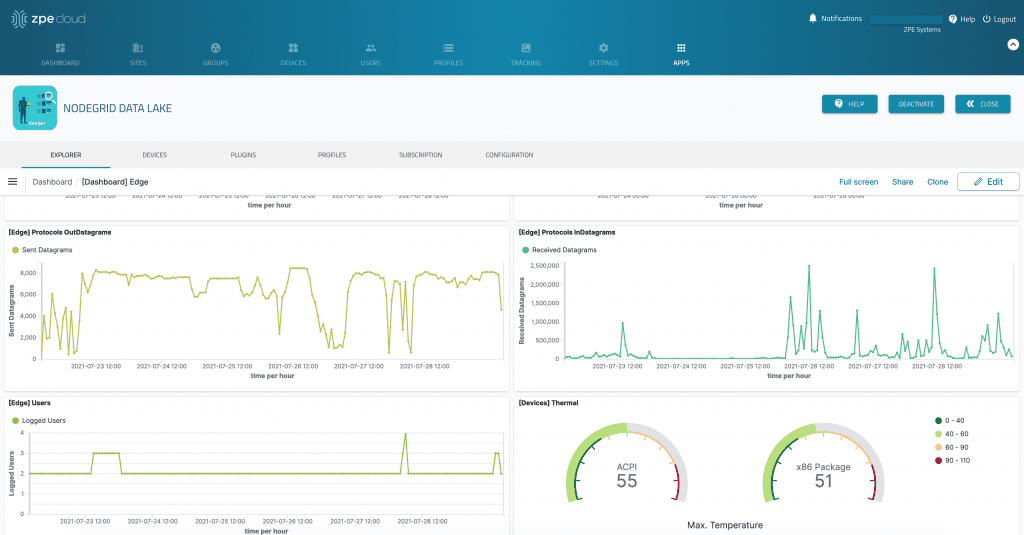
Network reliability and security are mission-critical for organizations. Yet, relying solely on in-band networks for monitoring and management creates a significant risk. When the primary network experiences an outage or breach, IT teams need to scramble to regain control. Out-of-band monitoring offers a dedicated pathway for monitoring and managing devices, so teams have reliable, always-available access to ensure resilience. But, how does out-of-band monitoring work? What can it monitor? Why is it essential to a network resilience strategy? Let’s find out.
What is Out-of-Band Monitoring and How Does it Work?
Out-of-band monitoring is a network management strategy that uses a dedicated management network, separate from the production network, to monitor and manage critical infrastructure. Whereas in-band monitoring relies on the same data network used by users and applications, out-of-band monitoring remains isolated and operational even if the main network is down.
How does out-of-band monitoring connect to devices?
- Console Access via Serial Ports: Out-of-band monitoring uses serial console ports on routers, switches, firewalls, and servers to provide direct access to the device’s command-line interface (CLI). This connection bypasses the primary network entirely.
- Dedicated Management Interfaces: Many modern devices come with a dedicated management Ethernet port (e.g., Cisco’s management interface or HP iLO for servers). These ports are linked to an out-of-band network, allowing secure remote access.
- Secure Remote Access Gateways: Centralized console servers or remote access gateways aggregate connections to multiple devices, making it easy to manage a large number of endpoints from a single interface.
Teams can gain remote access to out-of-band console servers via dedicated cellular, ISP, Starlink, or other connection that is separate from the main network.
Image: An out-of-band network provides dedicated connectivity that’s separate from the main network. NOC admins can gain access to out-of-band console servers via cellular, dial-up, ISP, or other connection, and manage all data center/branch devices connected to the console servers.
What can out-of-band monitor and manage?
- Network Device Status: Real-time monitoring of routers, switches, and firewalls for availability, performance, and errors.
- Power Systems: Monitoring and managing power distribution units (PDUs) to ensure stable power, perform remote power cycling, and maintain updated firmware.
- Server Health: Tracking CPU, memory, disk usage, and hardware diagnostics for servers through out-of-band management interfaces like IPMI, Dell iDRAC, or HP iLO.
- Environmental Conditions: Temperature, humidity, and physical security sensors can be monitored to detect and respond to environmental threats in data centers and remote sites.
- Network Connectivity: Ensures WAN links, including primary and backup connections (cellular or satellite), are functioning properly.
How Out-of-Band Monitoring Improves Resilience
Out-of-band monitoring significantly enhances network resilience by providing independent access to critical infrastructure. With transparency into device health, network performance, and other systems, teams can stem issues before they have a chance to develop into outages or security breaches. If any problems do occur on the main network, this out-of-band lifeline lets teams instantly respond rather than forcing them to dispatch on-site technicians.
- Always-On Access
Out-of-band networks operate independently from production traffic, ensuring that administrators can maintain visibility and control even when the primary network is congested or down. - Incident Recovery and Diagnostics
When the primary network is compromised, out-of-band allows IT teams to perform root cause analysis, reconfigure devices, and restore services without relying on affected in-band connectivity.- Example: During a DDoS attack, out-of-band provides a clean path to troubleshoot and block the attack at the firewall.
- Example: If a firmware update causes a network device to become unresponsive, the out-of-band console allows administrators to roll back changes or restore from backup.
- Secure and Segmented Access
Out-of-band isolates management traffic from business data, reducing the attack surface and preventing lateral movement by attackers. Combined with multi-factor authentication (MFA), access control lists (ACLs), and encrypted tunnels, out-of-band becomes a secure channel for managing sensitive infrastructure. - Proactive Monitoring and Automation
Advanced OOB solutions enable proactive monitoring of device health and predictive failure analysis. Integrated automation tools can trigger alerts, backups, or failover mechanisms when certain thresholds are reached.
Secure Out-of-Band Monitoring with ZPE Systems’ Nodegrid Platform
When implementing out-of-band monitoring, ZPE Systems’ Nodegrid platform offers a secure, vendor-agnostic solution designed for modern IT environments.
Why Nodegrid Stands Out:
- Universal Compatibility: Nodegrid supports a wide range of network devices and servers, integrating with Cisco, Juniper, Dell, Palo Alto Networks, and more.
- Consolidated Devices: Nodegrid is a multi-function, drop-in solution that replaces six or more traditional management devices, including servers, routers, switches, cellular, and others.
- Built-In Cellular and Starlink Failover: Ensure remote sites stay connected through cellular 4G/5G or satellite (Starlink) connections when traditional WAN links fail.
- Centralized Management: Nodegrid provides a unified management interface that enables IT teams to monitor, manage, and automate infrastructure from a single dashboard.
- Security First: Nodegrid and ZPE Cloud are the industry’s most secure platform, with features like role-based access control (RBAC), network segmentation, and encrypted communications to safeguard management traffic.
Image: ZPE Cloud enables data collection and analyses for out-of-band monitoring, allowing users to monitor infrastructure metrics, visualize trends, and take a proactive approach to maintaining uptime.
Out-of-band monitoring is essential for any organization prioritizing uptime and security. The Nodegrid platform by ZPE Systems offers secure, scalable solutions like the 96-port Nodegrid Serial Console Plus for hyperscale data centers and the Nodegrid Gate SR for remote sites. With support for automation, APIs, and custom alerts, Nodegrid simplifies out-of-band monitoring for complex networks while ensuring continuous control, even during outages.
Explore Nodegrid for Drop-In Out-of-Band Monitoring
See why Nodegrid is the drop-in out-of-band monitoring solution trusted by hyperscalers, telecom, retail, and hundreds of global organizations. Request a demo today.


